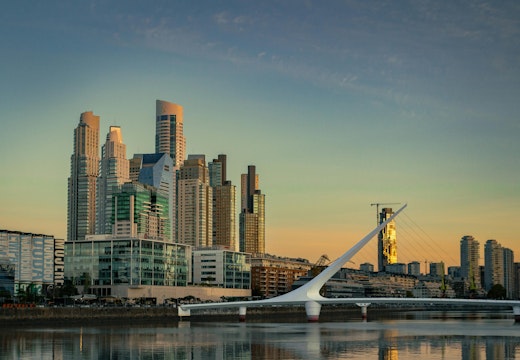The future of work is now: Stockholm gets set for accelerated change
From Society 5.0 to keeping pace with change, WORKTECH24 Stockholm emphasised that the future of work is not distant but already shaping how we live, work and connect
The pace of change in the workplace is accelerating at a speed we have never experienced before, yet we are still talking about the future of work as if it’s a distant concept. This was the central message at the WORKTECH Stockholm conference, held on 8th October in the striking brutalist venue, A House.
Instead of focusing on the distant future, the event urged for a shift towards making small, actionable adjustments today to keep pace with rapid transformation. As the closing keynote speaker of the conference, Niklas Madsen of Superlab, noted in his presentation, ‘The next 10-15 years will bring as much change as the past 60 years’.
The rapid pace of change requires constant iterations and adjustments in the workplace as behaviours, expectations and technologies evolve. However, to make change we need to remove ourselves from siloes and borrow inspiration from other disciplines and industries. It was at this intersection of perspectives where the conversation at WORKTECH Stockholm centred.
Embracing Society 5.0
We often underestimate the pace of change. Madsen used the example of The Jetsens to illustrate how ideas that may seem ‘crazy’ today quickly become obvious. For example, The Jetsens forecasted technology such as video calls, virtual doctor appointments, robotic hoovers and smart wearable technology – sound familiar? What was once a futuristic aspiration has become commonplace in society today.
Madsen introduced the concept of ‘Society 5.0’ – a stage of societal development driven by personalisation and connectivity. As industrial revolutions speed up, we are entering a phase where adapting to change is a constant challenge. This is particularly difficult for large corporate organisations who may not have the agility of smaller companies.
Building relationships, not spaces
As digital and physical worlds continue to blur, organisations need to be nimble in responding to shifts in technology, consumer behaviour and employee expectations. For this, we can borrow ideas from the retail sector. Retail expert, Ibrahim Ibrahim of design firm Portland discussed how the fusion of physical and digital worlds has been shaping industries like retail for more than two decades.
‘Working from home will not kill offices, it will liberate them’
In drawing parallels to the workplace, Ibrahim said ‘Working from home will not kill offices, it will liberate them’. Just as online shopping did not eliminate physical stores but enhanced their purpose, remote work is pushing organisations to rethink the function of physical spaces. Offices must now offer experiences that foster social connections and culture, serving as places where employees can engage with a brand on a deeper level.
Designing for Generation ‘C’
Another key takeaway from Ibrahim’s presentation was the emergence of Generation ‘C’, a demographic defined not by age but by their desire for control over with work environments. For this demographic, workplace experience and building a stronger relationship with their organisation is about five key elements: connectedness, collaboration, cocreation, community and consciousness. This cohort demands more than just a space to work – they seek environments that offer meaning and allow them to actively engage with their organisation’s mission.
Ibrahim suggested that organisations should aim to create a ‘fandom’ in the workplace, akin to how brands build emotional connections with customers. To achieve this, workplaces must shift from being soulless locations to becoming immersive experience where employees feel a sense of belonging and purpose.
Applying theory to practice
An expert panel featuring leaders from Ericsson, Sandvik and IKEA added a perspective from how large organisations can adapt to change, focusing on the practical challenges of transforming workplace strategies. At Ericsson, one of the biggest challenges is understanding how people work and, critically, how they should work in the future. Cost considerations are still driving many workplace decisions, but understanding human behaviour is becoming essential.
Christina Boberg, facilities manager at Sandvik, discussed the need to move away from a one-size-fits-all approach to workplace design, tailoring strategies to the diverse needs of its employees. Meanwhile, IKEA are grappling with the complexity of curating consistent workplace experiences across different culture globally.
The panellists agreed that workplace real estate is no longer just about space or cost per square meter; it now involves multiple stakeholders, from HR and communications to branding and facilities management. This complexity reflects a broader shift in how organisations view their physical environments – not just as assets, but as integral to culture, engagement and brand identity.
Lighting a way for healthier workplaces
Another key theme that emerged from the event was the importance of lighting in the workplace, in particular the colour cyan. As Sweden prepares for the winter months, with fewer daylight hours, the conversation around lighting emphasised its critical role in maintaining health and productivity in the workplace.
LED lighting, particularly those designed to emit light in the cyan spectrum, was advocated as a sustainable solution to reset circadian rhythms and support healthier work environments. Lighting experts Peter Duine of Signify and Shelley James highlighted that as employees spend more time indoors, especially during darker winter months, these lighting innovations offer a way to keep them engaged and operating at peak performance.
Interestingly, studies of Olympic athletes show that peak physical performance often occurs in the afternoon, largely due to the natural alignment of circadian rhythms. By optimising lighting in the workplace, organisations can help employees sync their internal clocks for better focus, creativity, and overall productivity throughout the workday.
Small adjustments for big change
WORKTECH Stockholm underscored that the future of work is already here, and organisations must learn to adapt swiftly. From embracing Society 5.0 to understanding the evolving relationships between people and their workplaces, the event highlighted the need for flexibility, personalisation, and a deep understanding of human behaviour. The next wave of change will come fast, and the organisations that thrive will be those that make continuous, small adjustments to stay ahead of the curve.








